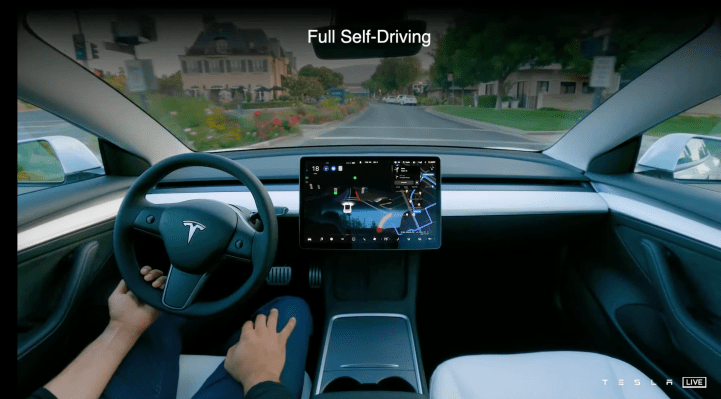Tesla has started rolling out version 11 of its Full Self-Driving (FSD) beta software to employees and testers after several months of delays. The EV-maker hasn’t officially shared release notes on FSD Beta V11.3, but leaked notes and videos from beta testers have surfaced online, giving us a better idea of what’s to come.
FSD beta V11.3 promises to allow a Tesla to drive itself completely from A to B through cities and highways by combining FSD and Autopilot capabilities into a single-stack system. Today, drivers can engage FSD on city and residential streets to handle things like responding to stop signs and traffic signals. Highway driving is available via Autopilot’s software, which can automate driving tasks like traffic-aware cruise control and automatic steering in clearly marked lanes.
The latest version enables FSD beta on highways, which “unifies the vision and planning stack on and off-highway and replaces the legacy highway stack, which is over four years old,” according to release notes shared on Reddit. The notes continue:
The legacy highway stack still relies on several single-camera and single-frame networks, and was setup to handle simple lane-specific maneuvers. FSD Beta’s multi-camera video networks and next-gen planner, that allows for more complex agent interactions with less reliance on lanes, make way for adding more intelligent behaviors, smoother control and better decision making.
It’s this capacity for better decision making that has led to an additional highway behavior that moves the car away from blocked lanes and generic obstacles like road debris. Vehicles move more smoothly at highway lane splits because the software is programmed to be less strict about centering between lane lines and allowing lower jerk maneuvers, according to the release notes.
FSD 11 also promises smoother merges and improved speed-based lane change decisions, as well as reduced sensitivity for speed-based lane changes in Chill mode. (Chill mode is one of Tesla’s three driving modes and it provides a larger follow distance between the Tesla and the car in front of it, and performs fewer speed-based lane changes. The other two modes are Average and Assertive.)
Those who have been granted early access to V11.3 have said the new software provides a more seamless overall experience, but it’s not entirely free from issues that have led to disengagements. When disengagements happen, though, Version 11 includes a voice drive notes feature that prompts the driver to record and send Tesla an anonymous message to describe what happened.
Some other version 11 updates include:
- Expanded automatic emergency braking in the case of vehicles crossing the car’s path and stealing the right of way — this feature will be active in both manual and Autopilot operations.
- Improved Autopilot reaction time to red light and stop sign runners by 500 meters through increased reliance on an object’s instantaneous kinematics and trajectory estimates.
- Reduced latency of trajectory optimization by 20% on average.
- New visualizations with gray road edges and a wider representation of the car’s path.
FSD version 11, coming to a Tesla near you?
CEO Elon Musk had originally promised to get the latest version of FSD to drivers before the end of 2022, but has since delayed the release several times.
In early February, he tweeted, “V11 has been tougher than expected, as it is a significant rearchitecture of [neural networks], plus many more NNs replacing C++. Hoping to ship v11.3 end of week.”
A couple weeks later, Tesla released v11.3.2 to limited beta testers, from whom it will collect data before a more widespread release starting in North America. After that, Tesla will adapt the software for EU roads and submit to regulators, said Musk.
Even though customers are eager to try out the new FSD version, they might have to wait a little longer. Last week, Tesla issued a recall of around 360,000 vehicles with FSD in the U.S. (Tesla has rolled out FSD to 400,000 vehicles in North America) after an analysis from the National Highway Traffic Safety Administration found the advanced driver assistance system (ADAS) could allow vehicles to act unsafe around intersections and cause crashes.
Musk has been quick to point out that when it comes to Teslas, a “recall” isn’t exactly the right word because the company fixes bugs through over-the-air software (OTA) updates, rather than physically recalling cars to dealers to be fixed. OTA updates are also how Tesla sends out new versions of FSD, so it’s entirely possible that the company will use version 11 to fix the problems regulators have pointed out.
Tesla disbanded its communications department in 2020 and could not be reached for comment.
